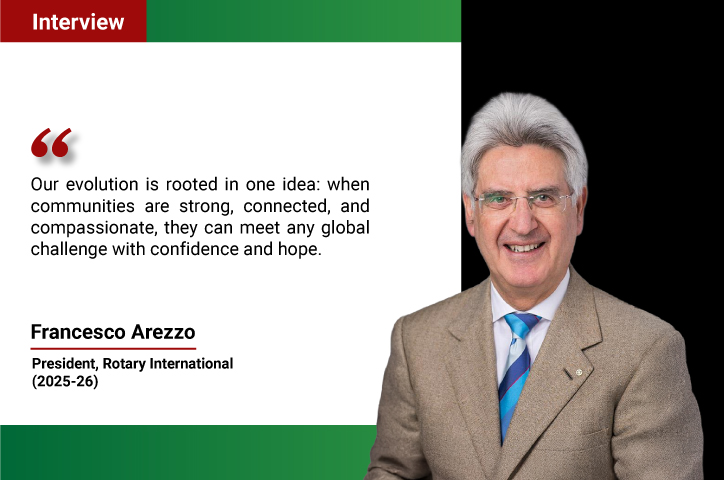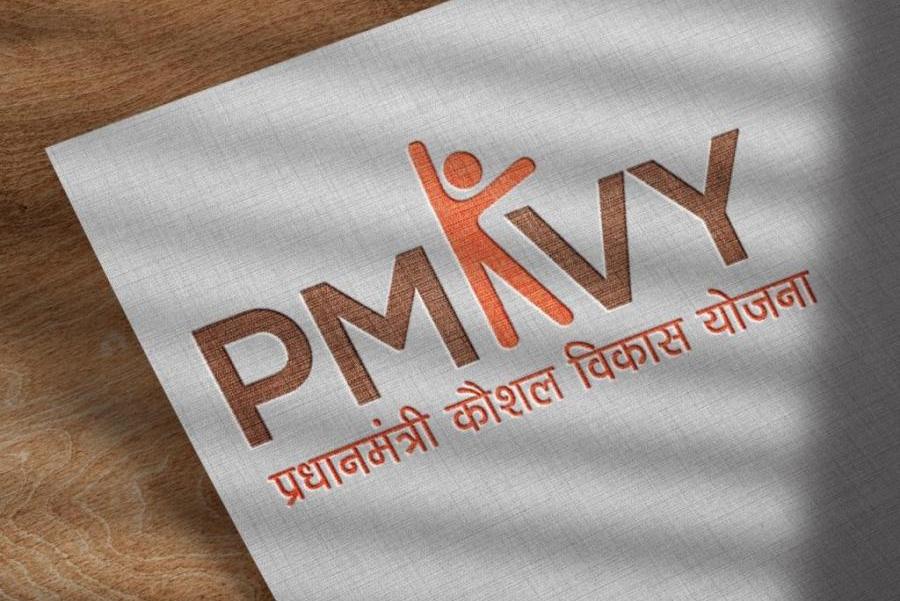In an era where sustainability has become a cornerstone of global progress, tools that enable communities and businesses to reduce their environmental impact are game-changers. The Transportation Emissions Measurement Tool (TEMT), developed by the TCI-IIMB Supply Chain Sustainability Lab, is leading India’s freight sector towards greener practices by offering precise emissions measurement tailored to local conditions.
This ISO 14083-certified tool bridges the gap between compliance and sustainability, empowering businesses of all sizes to meet global reporting standards while optimizing their operations for cost efficiency. From integrating emissions data into national platforms like ULIP to enabling data-driven decisions for Net Zero goals, TEMT is transforming the logistics landscape.
Scroll down to read an insightful conversation with Dr. Aditya Gupta, Chief Operations Officer, TCI-IIMB Supply Chain Sustainability Lab, as he delves into the vision, challenges, and future of TEMT in driving sustainable logistics across India.
Q. What inspired the development of the Transportation Emissions Measurement Tool (TEMT), and what were the key challenges faced during its creation?
A. The development of the Transport Measurement Emission Tool (TEMT) was inspired by the need to accurately measure and manage greenhouse gas (GHG) emissions in India’s freight transportation sector. With freight transportation contributing significantly to CO₂ emissions, there was a critical gap in tools that specifically catered to India’s unique transportation conditions. The TCI-IIMB Supply Chain Sustainability Lab, founded through collaboration between Transport Corporation of India Ltd (TCI) and the Indian Institute of Management Bangalore (IIMB), recognized the necessity of localizing emission factors to ensure accuracy in emissions reporting for Indian companies. Key challenges included accounting for the diverse range of vehicles, fuels, and operational practices in India that differ from those in European markets.
The Lab’s research findings resulted in the creation of a robust, India-specific emission measurement framework, addressing these discrepancies for more relevant data. This framework, translated into a practical tool over a SaaS platform, was called the Transport Measurement Emission Tool (TEMT). It is a user-friendly solution that supports businesses in calculating transportation emissions and promotes sustainability in logistics.
Q. As the first organization in India to achieve ISO 14083 certification for TEMT, how does this recognition validate the tool's accuracy and reliability for Indian companies?
A. The methodology used by TEMT’s algorithm has been peer reviewed and certified with ISO 14083:2023 which is the international standard for measuring transport related GHG emissions. These GLEC compliant calculations are based on the GHG Protocol methodology, which is widely recognized for its accuracy and transparency. This methodology measures the factors from “Well-to-Wheel” and is compliant with global emission measurement protocols – especially meeting the US & European standards.
This recognition helps Indian companies confidently report their emissions, knowing that the calculations are in line with international standards and it boosts their credibility when complying with sustainability goals, both locally and globally.
Q. How does TEMT help Indian companies align with global emissions reporting standards and enhance their ability to meet regulatory requirements? Could you provide specific examples of its impact?
A. TEMT aligns Indian companies with global emissions reporting standards through its integration with ISO 14083-certified emission factors. By using India-specific data, TEMT ensures that emissions calculations reflect the actual operational conditions in India, thus improving the accuracy of reports. This helps companies meet both local regulatory requirements and international sustainability standards, such as those set by the US and European markets. For example, TEMT enables businesses to accurately report emissions for export logistics, helping them comply with environmental standards in competitive global markets and avoid penalties for non-compliance.
This is a nationwide initiative designed for businesses across the country. Several companies are already using TEMT and experiencing its benefits.
Q. Can you elaborate on the unique features of TEMT, such as multi-modal transport support, cloud-based data storage, and customizable transportation chains?
A. TEMT stands apart from other emission calculators by being specifically designed using Indian emission factors, ensuring greater accuracy and relevance for businesses operating in India. This localization of data makes it more reliable and effective in calculating emissions, enabling companies to adopt sustainable practices tailored to the Indian market, while also being globally compliant, especially meeting the US & European standards. Following are the USPs of TEMT that qualitatively position to meet all the requirements of Indian businesses.
- Multimodal coverage across Road, Rail, Air & Waterways.
- Emission comparison for effective & efficient route planning
- India-specific emission factors with GLEC Framework compliance
- Multiple Fuel Factors – Tracking Well-to-Wheel emissions
- Enables Long term record keeping for tracking periodic progress.
- Commodity agnostic calculations – suitable for businesses across all industries
- Enables data-driven decision making for planning customised routes
- Peer reviewed & trusted algorithms, also trusted by top corporates
- Cloud hosted with best-in-class Data Security
- Near 100% uptime & availability.
The platform is designed to be user-friendly, requiring no specialized infrastructure. The TEMT portal is hosted on a secured cloud and is available online, with a Login-based access. This set-up ensures 100% uptime & secured data storage for every user account. A simple computer with an internet connection is all that is needed to access and run the application, making it accessible for businesses of all sizes. It can also be accessed through an ordinary mobile browser.
Q. How has the integration of TEMT’s emission factors API into the Unified Logistics Interface Platform (ULIP) added value to logistics operations and decision-making?
A. India’s 1st and only ISO 14083 certification for our portal, testifies to the credibility of TEMT’s measurement output. These emission factors are now also integrated with the ULIP portal and forms a foundation for the Government level reporting of India’s transport emissions. TEMT has been especially developed for ease of adoption for businesses of all sizes - be it large MNCs or MSMEs. Many businesses today struggle to report their emissions due to high cost of sustainability reporting compliance, often losing out on orders in the competitive market – this is a big pain point especially for export compliances. TEMT promotes visibility and transparency, reducing the burden of sustainability related compliances.
Q. Given that transportation accounts for 40% of CO₂ emissions within the sector, how does TEMT contribute to emission reduction efforts and promote sustainable logistics practices?
A. TEMT plays a crucial role in reducing emissions by offering businesses a tool to measure, track, and manage their emissions across various transportation modes. By providing accurate, real-time emissions data, TEMT enables companies to make informed decisions about their logistics strategies, such as selecting more fuel-efficient routes or shifting to greener transportation modes. This promotes sustainable logistics practices and helps companies align with global sustainability goals. With transportation projected to see a significant rise in emissions, TEMT empowers companies to take proactive steps in reducing their environmental impact, which is critical for achieving India’s Net Zero targets.
Several companies from diverse regions are already actively using TEMT. Its design ensures both scalability and adaptability to various business needs, allowing companies across the country to seamlessly integrate it into their operations for more efficient and environmentally conscious logistics management.
Q. Beyond regulatory compliance, how does using TEMT translate to cost efficiencies and improved decision-making for businesses?
A. Businesses are creating unique trails of supply chain elements best-suited to their customised needs, balancing both logistics cost & reducing emissions through data-based decisions.
Cost efficiencies: TEMT’s ability to optimize route planning and emissions tracking allows businesses to identify cost-effective, low-emission transportation options. For example, by comparing emissions across different transport modes and routes, companies can make decisions that reduce fuel consumption and lower operational costs.
Improved decision-making: TEMT equips businesses with actionable data to make informed choices about transportation strategies. This includes optimizing delivery routes, selecting the most efficient vehicles, and planning for long-term emissions reductions. These insights help businesses minimize both environmental and financial costs.
These applications have enabled them to redefine their sustainability strategies for reaching their Net-Zero goals. The biggest advantage is that they are now able to comply with the sustainability related requirements to be shared during the ordering process of MNC clients. No more losing Purchase Orders due to non-availability of data means more opportunities, access to wider markets and faster business growth. Due to this, new businesses are adopting TEMT everyday even as we speak.
Q. Are there plans to scale TEMT further or introduce additional functionalities to address emerging sustainability challenges?
A. Yes, we are working on the next phase of development and scaling up the platform. The platform is already being adopted by businesses across India, and future developments include the creation of a mobile app and multilingual interface to expand accessibility.
As sustainability challenges evolve, TEMT is being continuously enhanced to meet the growing needs of businesses. Future updates may include additional features, such as integration with emerging technologies in logistics, or expanding the platform’s functionalities to address new regulatory requirements or carbon offsetting strategies.
Q. How does TEMT align with the broader sustainability vision of the TCI-IIMB Supply Chain Sustainability Lab, particularly in areas like decarbonisation, circular economy, and sustainable procurement?
A. TCI-IIMB Supply Chain Sustainability Lab is a research facility founded by Transport Corporation of India Ltd (TCI) and IIM Bangalore in 2023. Situated in the premises of IIMB, it conducts research in areas such as decarbonisation, circular economy and sustainable procurement, and publish white papers on sustainable supply chain management topics. It offers consulting services on carbon-related mapping, measurement, mitigation and management. It targets to provide certification and assessment services, such as supplier sustainability assessment. It has initiated multiple research projects, white papers and case studies and is partnering with other organizations such as WRI India, Herbal Life, etc. This is one-of-its kind centre of excellence in sustainable supply chain practices, dissemination and advocacy.
TEMT is one of the premier projects being undertaken by the Lab. It has been created with a goal to encourage carbon related mapping & measurement by businesses. This will enable businesses to design decarbonisation strategies of their logistics operations and consequently drive higher sustainability targets.
Q. What steps do you think are necessary to encourage wider adoption of tools like TEMT across the Indian transportation and logistics sectors?
A. We are committed to continuously enhancing the platform to meet evolving industry needs and promote environmentally responsible logistics practices. Over the coming days, the following thrust areas are being prioritized -
Raising awareness: Educating businesses, particularly MSMEs, about the importance of emissions reporting and the benefits of using TEMT will be crucial. Highlighting how the tool simplifies compliance with global standards and reduces operational costs can drive adoption.
Government support: Increased collaboration with government bodies, such as providing incentives for businesses that adopt sustainability tools, could encourage wider adoption. Additionally, integrating TEMT into national platforms like ULIP helps businesses easily access the tool.
Enhanced User Experience: We are also looking at developing a multilingual interface and exploring the development of an app based version of this tool to enhance utility & adoption.
Building trust: Promoting trials & to showcase success in real-world applications is helping us build trust in the minds of businesses and policy makers alike. This is further reinforcing trust in the TEMT’s accuracy and reliability, prompting all stakeholders for a wider adoption.
















.jpg)




